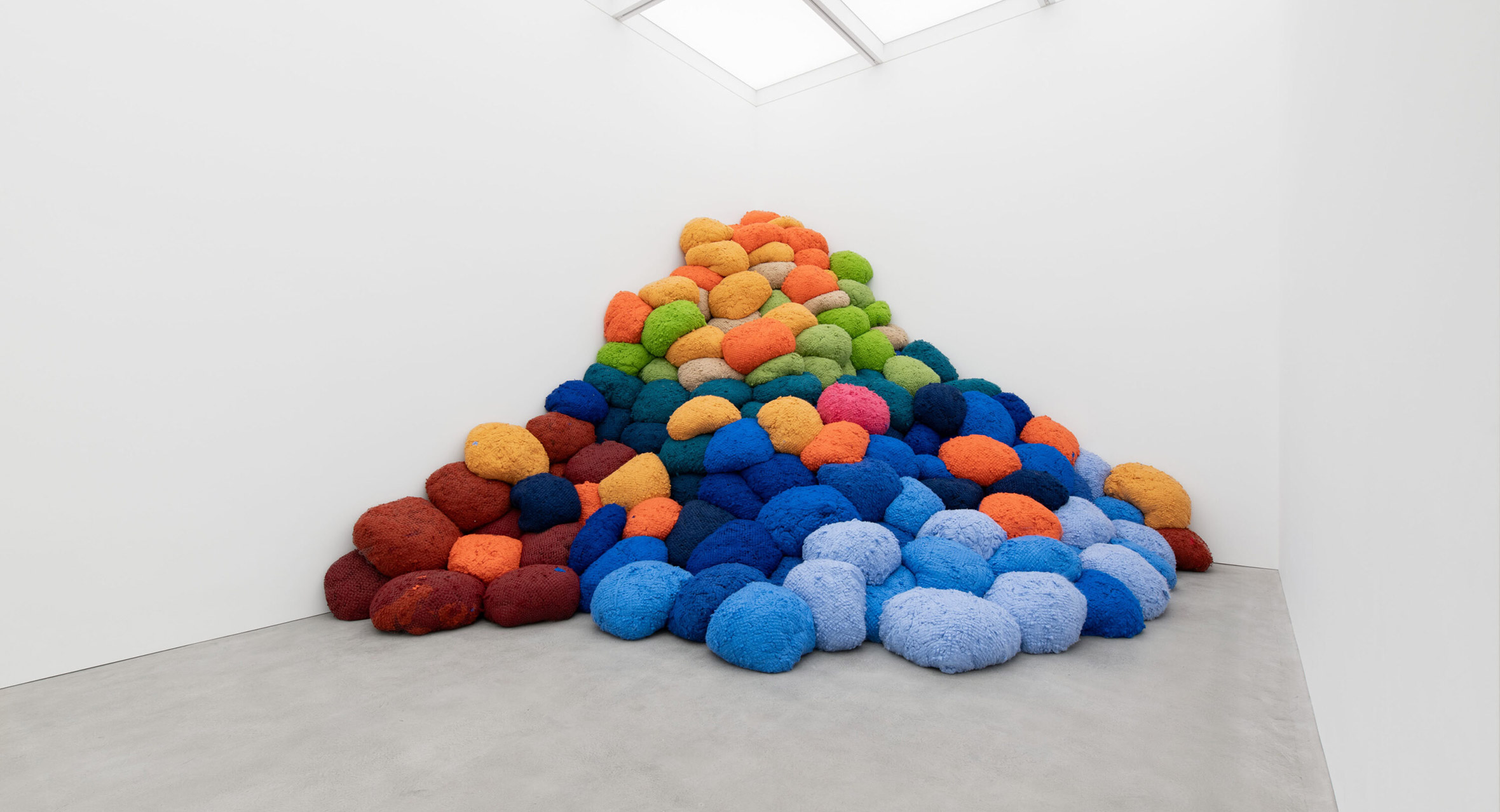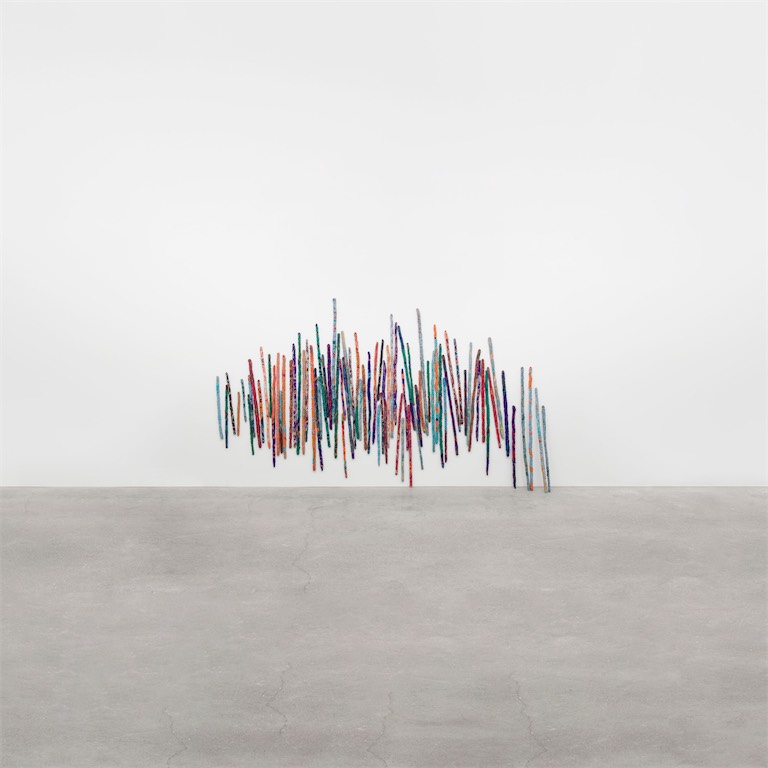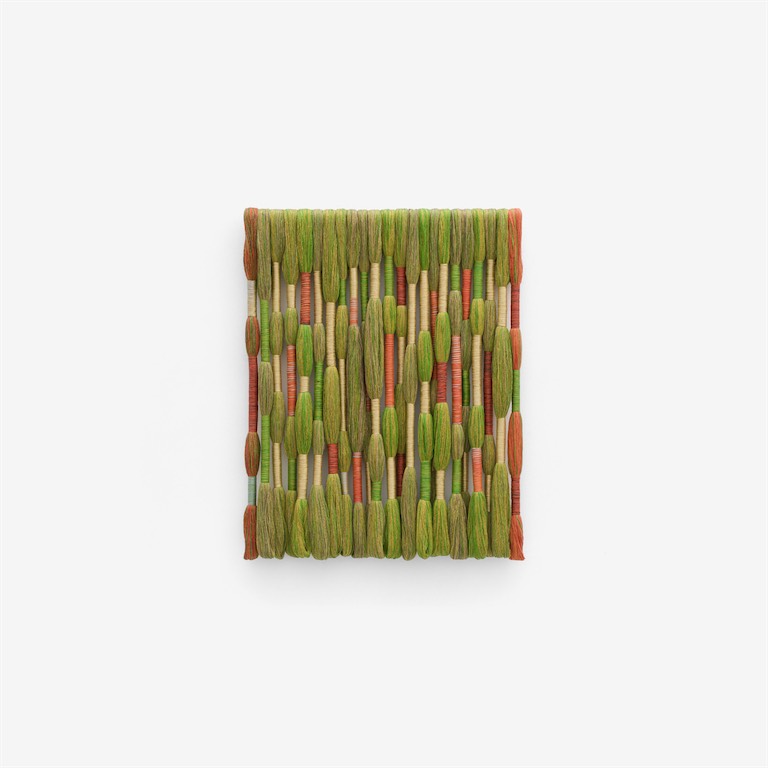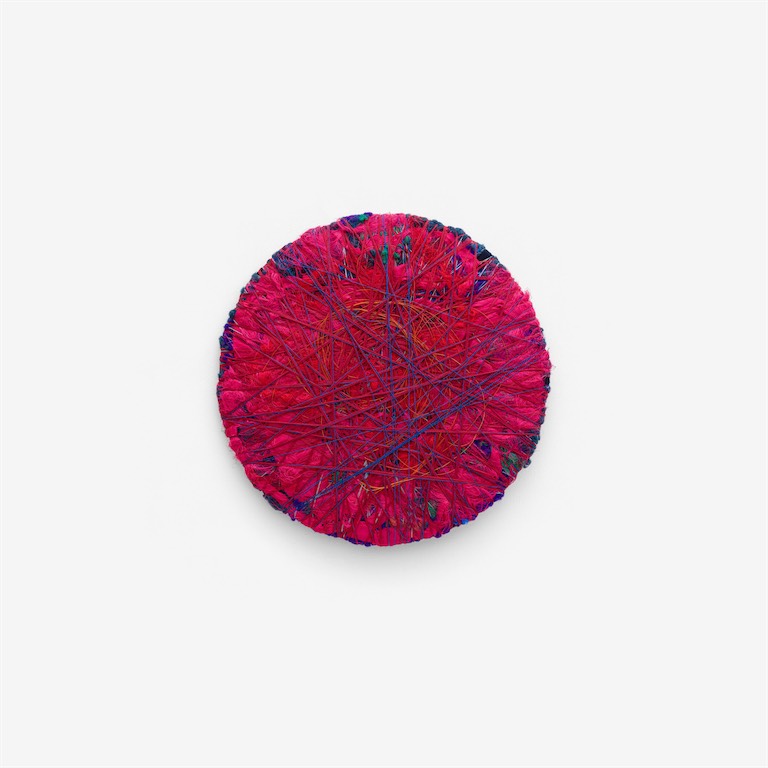
Sheila Hicks, Infinite Potential, 2023, pigmented acrylic fibre, 270 x 786 x 600 cm (106 1/4 x 309 1/2 x 236 1/4 in). Courtesy: © Sheila Hicks and Alison Jacques, London.
Sheila Hicks inaugurates Alison Jacques
Sheila Hicks presents ‘Infinite Potential’, the first exhibition at Alison Jacques 22 Cork Street, continuing a long-running collaboration with the gallery that dates back to 2012.
Following a significant renovation from concrete shell by architect Mike Rundell – who designed Jacques’ previous space on Berners Street – the 6000-sq-ft, three-floor gallery HQ comprises four exhibition spaces, private viewing rooms, ample offices and on-site storage. Jacques’ arrival on Cork Street anticipates the 20th anniversary of her gallery in May 2024, achieving a long-held ambition. “We look forward to showing our artists’ work in an outstanding space in the heart of historic Mayfair, which ultimately is the epicentre of the London art world,” she says, while tributing the many luminaries of Cork Street – Leslie Waddington, Victoria Miro, John Kasmin, James Mayor, Bernard Jacobson, and Robert ‘Groovy Bob’ Fraser.

Sheila Hicks, Talking Sticks, 2021-23, linen, cotton, silk, nylon and bamboo, 241 x 375 cm (94 7/8 x 147 5/8 in); installation dimensions variable. Courtesy: © Sheila Hicks and Alison Jacques, London.
Internationally acclaimed artist, advocate and pioneer Hicks (b.1934 Hastings, Nebraska; lives and works in Paris since 1964) presents, for the first time in London, different series of new work which make up her extensive vocabulary. The artist has created an installation of ‘Talking Sticks’, wall-based batons made from bamboo and multicoloured pigmented fibre placed as if in conversation with each other. While ‘Mirage in the Oasis’, from Hicks’ iconic ‘Lianes’ series has linen, cotton and silk cordes hanging as vines of colour in avocado green, russet orange and gold. New ‘Comets’, including ‘Scarlet in Orbit’ and ‘Coincidence’, burst with colour alongside the consistent presence of ‘Minimes’ – small-scale weavings made on a repurposed frame-turned-loom; metaphorical diaries of the artist’s adventures which often incorporate found objects such as seashells, stones, bones and razor clams. New thread paintings such as ‘Sunset Contained Forever’ are exhibited alongside ‘Bas Reliefs’. These include ‘He, She and More’ and ‘The Shortest Route to Mercy’ which reflect Hicks’ new direction and continued experimentation with warp and weft, as well her infinite spectrum of colour.
A new, monumental site-specific work upending sculptural and environmental conventions, with echoes of earlier large-scale installations (at the Hayward Gallery, London, the 57th Venice Biennale, and Glasgow International), inhabits one whole gallery space. As Hicks discussed with the architect David Chipperfield in 2022: “My great pleasure is that I feel the works and the space become one; they are involved with each other, inextricably linked”. Environmental responsibility is part of Hicks’ methodology; recycling of materials and packaging go hand-in-hand with work which changes and morphs from one space to another. Hicks’ intention for her work is ‘to penetrate time and space’ and ‘remain open-ended’.

Sheila Hicks, Mirage in the Oasis, 2023, linen, silk and cotton, 120 x 95 cm (47 1/4 x 37 3/8 in). Courtesy: © Sheila Hicks and Alison Jacques, London.
In 1956, Sheila Hicks was studying painting at Yale University. She studied pre-Columbian art under George Kubler, author of the influential ‘The Shape of Time: Remarks on the History of Things’ (1962); Hicks remembers that he ‘was flashing slides of incredible weavings up on the screen and what caught my interest was their colour, design and shape.’ The riches of the language Hicks discovered changed the course of her life: she began teaching herself how to weave. ‘My interest in textiles’, she said, ‘didn’t mean I stopped painting – I loved it – but my fascination with coloured lines and inventing pliable two- and three-dimensional structures slowly overtook every other enthusiasm’. Hicks has always been faithful to the medium of pigment, expanding its horizons and taking it to new places. ‘Every material is honoured and respected for its impact and potential’.
For six decades, Hicks has been expanding fibre’s potential via what she describes as
‘different investigatory channels’. Her extensive travels through South America shaped her formative years. She taught two- and three-dimensional design to architectural students in Chile, moved to Paris where she has lived and worked for the last 59 years, conducted workshops in Mexico, South Africa and Japan, and worked with weavers in Peru, Morocco, India, Israel and Saudi Arabia. Parallel to this was the realisation of major commissions including the Ford Foundation, New York, Fuji City Cultural Centre, Japan and the Fiat Tower, Paris, France.

Sheila Hicks, Solferino Mon Amor, 2023, hemp, linen, synthetic fibers and paper, diameter: 86 cm (33 7/8 in). Courtesy: © Sheila Hicks and Alison Jacques, London.
Hicks first exhibited in London at ‘Woven Forms and Sculpture’, Interiors International, Knoll (1965). Her first UK museum solo presentation was at the Hayward Gallery (2015) where Hicks was the only artist whom Dan Graham has allowed to exhibit within his glass pavilion. Following Hicks’ survey exhibition at The Hepworth Wakefield (2022), curated by Andrew Bonacina, subsequent museum solo shows include The Centre Pompidou Málaga and Kunstmuseum LOK St.Gallen (2023). In 2024, Hicks will have solo shows at the Kunsthalle Düsseldorf and Josef Albers Museum Quadrat Bottrop, as well as SFMOMA, San Francisco in 2025.
Sheila Hicks: ‘Infinite Potential’ continues until 18 November 2023 at 22 Cork Street, Mayfair.


